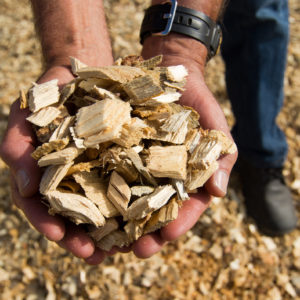A newly released study from the Netherlands Environmental Assessment Agency concludes that “biomass appears to play a significant role in a climate-neutral, circular economy.”
It’s the latest in a series of findings supporting forestry as part of a global strategy to lower carbon levels in the atmosphere.
The study, “Availability and Application Possibilities of Sustainable Biomass,” drew upon 400 papers and 150 interviews and found that the use of sustainable wood bioenergy is central to the Netherlands’ effort to mitigate climate change.
The report bolsters the argument that there is no path for the Netherlands to achieve a climate-neutral circular economy without a significant role for biomass.
This is significant because Dutch environmental activists, like their counterparts in the U.S. and European Union (EU), are divided over what role, if any, woody biomass should play in the fight to reduce carbon emissions.
Some groups, like the Dogwood Alliance, have gone so far as to refer to wood as “worse than coal” when it comes to its environmental impact, and they view the forestry industry as an agricultural version of Big Oil.
“Our forests aren’t fuel!,” insists the website of the left-leaning Natural Resources Defense Council. “So-called biomass energy damages our climate and air, our forests, and our communities while the industry hides behind veils of misinformation.”
Recently, however, there have been a series of studies looking into the costs and benefits of forestry land management as a method of sequestering carbon and, therefore, keeping it out of the atmosphere.
In April, the Congressional Research Service (CRS), the Library of Congress’ nonpartisan think tank providing policy and legal analysis to the U.S. Congress, published an overview highlighting the positive role played by forestry – and forests in the southeastern US in particular — in storing carbon to mitigate climate change.
“The EPA estimates that US forests were a net sink of carbon, having sequestered 221 million metric tons (MMT) of carbon in 2018—an offset of approximately 12 percent of the gross annual greenhouse gas emissions from the United States for the year,” the CRS reports.
In March, a study by researchers at the Universities of Maine, Ohio State and the Georgia Institute of Technology concluded:
“Incentivizing both wood-based bioenergy and forest sequestration could increase carbon sequestration and conserve natural forests simultaneously. We conclude that the expanded use of wood for bioenergy will result in net carbon benefits, but an efficient policy also needs to regulate forest carbon sequestration.”
And just days after the Dutch report, the European Commission released its 2030 EU biodiversity strategy explicitly declaring “sustainable bioenergy,” along with wind, solar and other energy sources, “essential to fight climate change.”
“When forests are properly and sustainably managed, bioenergy is a good and viable option, benefitting the reduction of carbon emissions,” Gert-Jan Nabuurs, Professor of European Forest Resources at Wageningen University and Research, told InsideSources.
“It’s important that importing countries (e.g. in the EU) fulfill sustainability criteria that assure, no net loss of carbon stock in the forest, no harvesting in primary forests, good management plans, etc.”
Critics argue that using wood as part of a carbon-reducing energy stream incentivizes destructive practices, such as clearing forests in sensitive areas like the Amazon. Supporters counter that a market for sustainable forestry like that in the American southeast gives landowners incentives to continue to grow trees, knowing there will be a market for the wood products they grow.
“Forest land has increased six percent since 1997 in the South. Its forests are known as the nation’s wood basket, because the region includes the highest rate of planted timberland,” says Sonja Oswalt of the U.S. Forest Service.
It’s part of the 823 million acres of forests and woodlands across America.
“In the long-term, few doubt that solar and wind will be the largest and most widespread electricity sources, but it will take a while to emerge,” economist Brent Sohngen of The Ohio State University told InsideSources.
“To meet shorter-term goals with relatively modest costs, biomass can help. Biomass can also help as a capacity fuel, e.g., when wind and solar don’t provide enough electricity to the grid. It has higher private marginal costs than natural gas, but it is carbon neutral.”
Even the UK government’s former Chief Scientific Adviser Sir John Beddington, once an outspoken skeptic of biomass as a tool to reduce carbon emissions, has embraced the technology.
“The [United Nations Intergovernmental Panel on Climate Change] IPCC and [UK] Committee on Climate Change both recognize that sustainably sourced biomass will play an important role in meeting climate change targets,” Beddington said when he agreed to serve on an advisory board to a major biomass project in Great Britain.
“It’s vital that biomass is sourced sustainably and takes the latest scientific thinking into account.”

